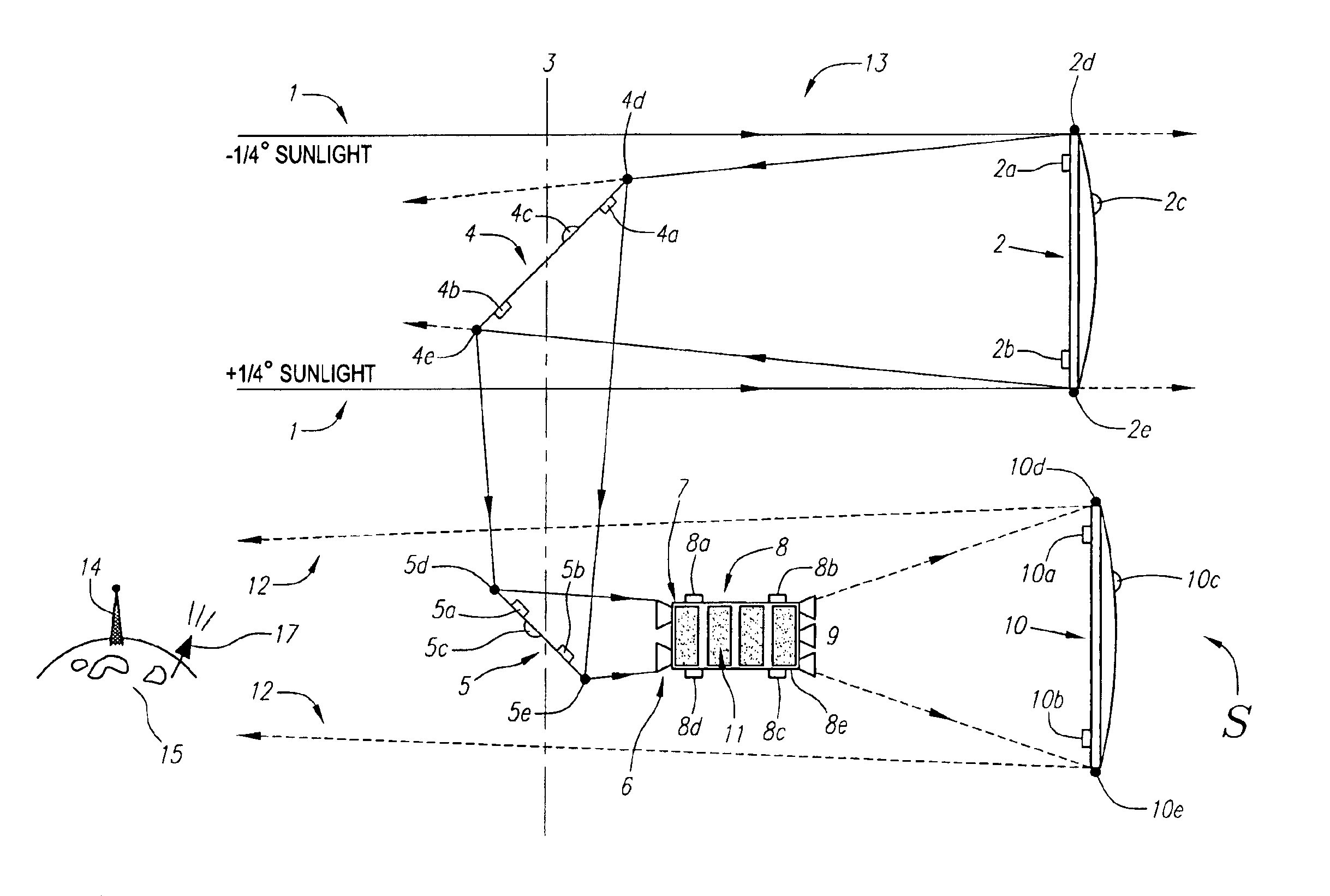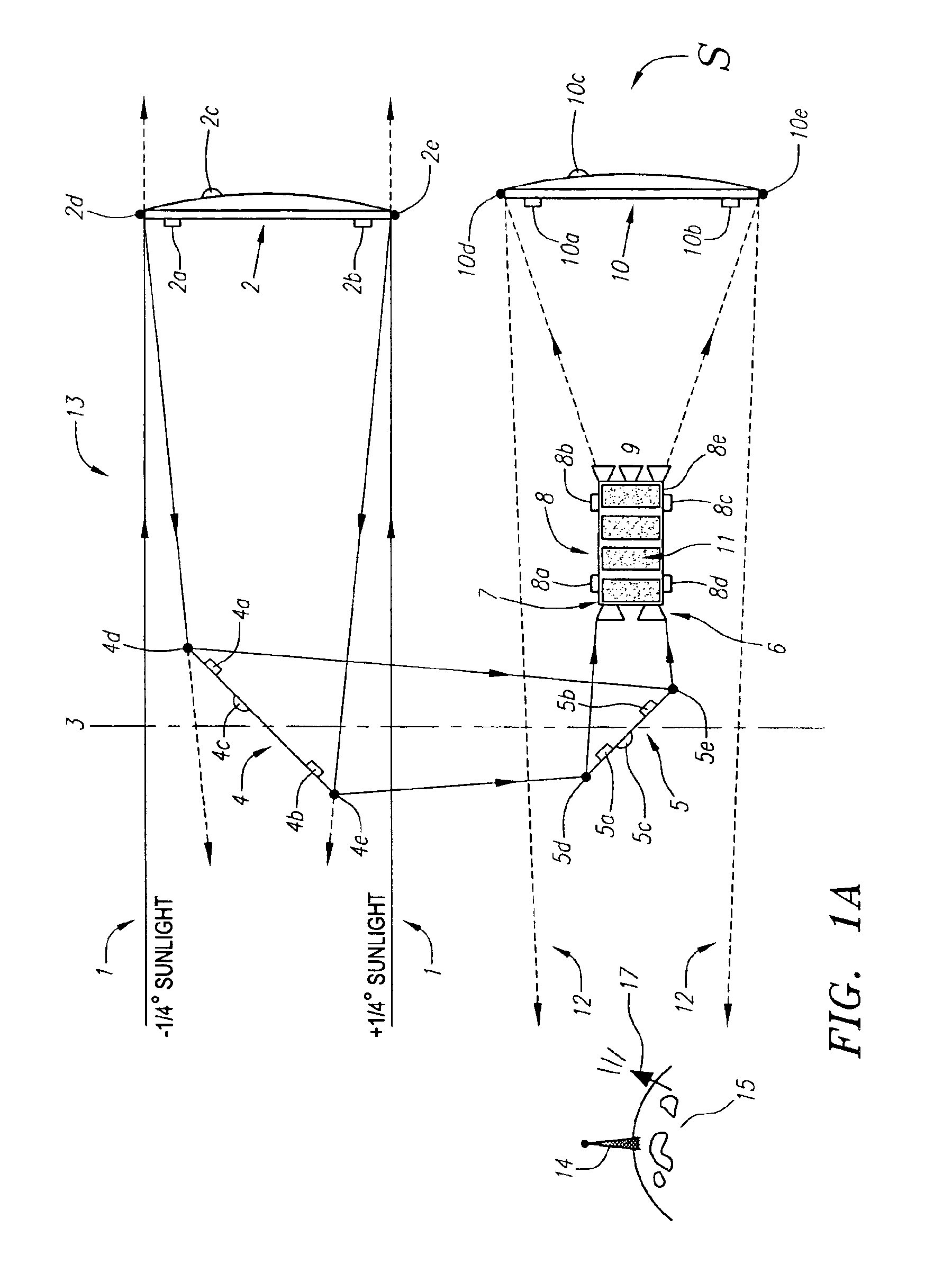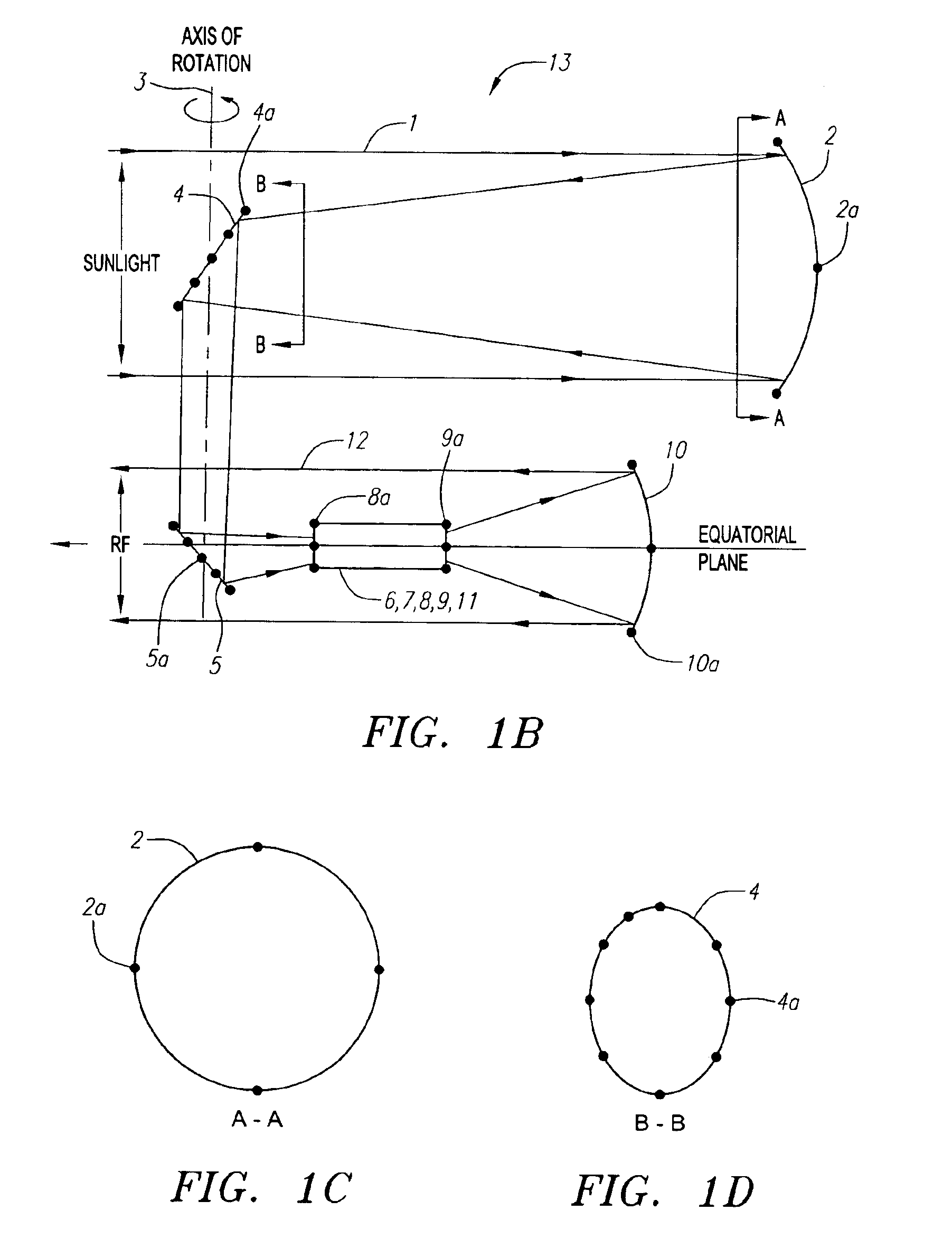Space-based power system
a power system and space technology, applied in the field of space-based power systems, can solve the problems of low efficiency and high cost of these systems, preventing their effectiveness, and increasing launch costs, so as to achieve the effect of increasing the launch cost and low cos
- Summary
- Abstract
- Description
- Claims
- Application Information
AI Technical Summary
Benefits of technology
Problems solved by technology
Method used
Image
Examples
Embodiment Construction
[0035]Embodiments of a space-based power system with one or more free-floating or free-flying system components that can be aligned will now be described. The embodiments include components that can be aligned while substantially reducing or eliminating connecting structures between system components, and using a control system to provide for alignment and positioning of free-floating system components.
[0036]Referring to FIG. 1A, one embodiment of a space-based power system “S” includes power generation and transmission components. One embodiment of a system includes a primary or collection mirror 2, which orbits about axis 3, intermediate mirrors 4 and 5, a panel 11 with concentrators 6, an optical or power module 8 with solar cells 7, a transmitter feed or emitter 9, and a transmission subsystem that can include, for example, a reflector or output mirror 10 and one or more other mirrors as necessary. A control system 13 adjusts the shape, position, orientation and alignment of the...
PUM
 Login to View More
Login to View More Abstract
Description
Claims
Application Information
 Login to View More
Login to View More - R&D
- Intellectual Property
- Life Sciences
- Materials
- Tech Scout
- Unparalleled Data Quality
- Higher Quality Content
- 60% Fewer Hallucinations
Browse by: Latest US Patents, China's latest patents, Technical Efficacy Thesaurus, Application Domain, Technology Topic, Popular Technical Reports.
© 2025 PatSnap. All rights reserved.Legal|Privacy policy|Modern Slavery Act Transparency Statement|Sitemap|About US| Contact US: help@patsnap.com



